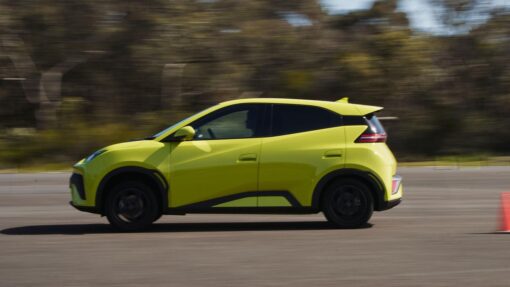North Korea fires missile over Japan
Josh Smith, Hyonhee Shin, Kantaro Komiya |
Nuclear-armed North Korea has fired a ballistic missile over Japan for the first time in five years, prompting a warning for residents to take cover and a temporary suspension of trains in northern Japan.
The Japanese government warned citizens to take cover as the missile appeared to have flown over and past its territory before falling into the Pacific Ocean.
It was the first North Korean missile to follow such a trajectory since 2017, and Tokyo said its 4600km range may have been the longest distance travelled for a North Korean test flight, which are more often “lofted” higher into space to avoid flying over neighbouring countries.
The latest launch was Pyongyang’s fifth in 10 days, amid military muscle-flexing by the United States, South Korea and Japan.
Last week, the three countries conducted trilateral anti-submarine exercises that included a US aircraft carrier.
Tokyo said it took no steps to shoot the missile down.
Defence Minister Yasukazu Hamada said Japan wouldn’t rule out any options, including counterattack capabilities, as it looks to strengthen its defences in the face of repeated missile launches from North Korea.
South Korea also said it would boost its military and increase allied cooperation.
The US said it strongly condemned North Korea’s “dangerous and reckless” decision to launch a long-range ballistic missile over Japan.
“This action is destabilising and shows the DPRK’s blatant disregard for United Nations Security Council resolutions and international safety norms,” National Security Council spokesperson Adrienne Watson said in a statement, using the initials for North Korea’s official name.
US Secretary of State Antony Blinken held phone calls with his South Korean and Japanese counterparts during which they “strongly condemned” the North’s latest test. The launch violates U.N. Security Council resolutions, which have imposed sanctions over Pyongyang’s nuclear and missile programmes.
South Korea’s Joint Chiefs of Staff said it appeared to have been an intermediate-range ballistic missile (IRBM) launched from North Korea’s Jagang Province.
The test prompted East Japan Railway Co to suspend train operations in the northern regions, Japanese broadcaster NHK reported.
The initial flight details suggest the missile may have been the Hwasong-12 IRBM, which North Korea unveiled in 2017 as part of its threatened plan to strike US military bases in Guam, said Kim Dong-yup, a former South Korea Navy officer.
The Hwasong-12 was used in 2017 tests that overflew Japan.
South Korean President Yoon Suk-yeol called the test “reckless” and said it would bring a decisive response from his country’s military, its allies and the international community.
Speaking to reporters in Tokyo, Japanese Prime Minister Fumio Kishida called North Korea’s actions “barbaric”, and said the government would continue to gather and analyse information.
South Korea’s defence minister, Lee Jong-sup, told parliament on Tuesday that the North completed preparations for a nuclear test around May. If there is a test, he said, it might use a smaller weapon meant for operational use, or a device with a higher yield than in previous tests.
Lee said it was difficult to predict when Pyongyang would conduct its seventh nuclear test, but lawmakers briefed by intelligence officials last week said that a possible window could be between China’s Communist Party Congress this month and US mid-term elections in November.
Reuters


